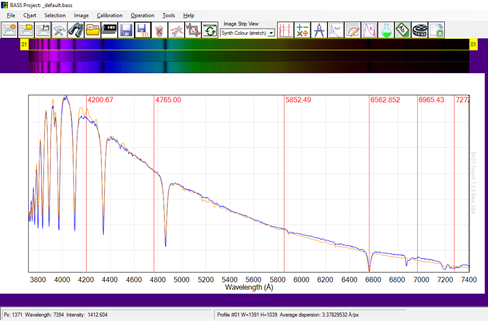2017 June 10
Guide to Processing Spectra Using the BASS Software
This guide has been written as an end to end tutorial to processing spectra using the BASS software. Though the spectra in the tutorial were acquired with an Alpy 600 spectrograph, the same processing steps apply to spectra acquired with any slit based spectrograph.
The guide may be accessed by following this link to the pdf document.

The BASS software is capable of performing all the processing steps from dark subtraction, bias subtraction and flat fielding, through to geometric corrections, wavelength calibration and response correction. Though there is nothing to stop you from performing dark, bias and flat field calibration in your preferred software, and then jumping into this tutorial at section 3.
A tricky step for Alpy 600 users can be wavelength calibration due to the many lines produced by the Argon/Neon calibration lamp. To help, section 5 contains a set of suggested lines, along with sample spectra from reliable sources with many other lines identified. It also includes a section on how to use an A or a B-type star for wavelength calibration for those who do not have a calibration lamp.
The tutorial includes an explanation of how to populate the BeSS settings, necessary for submitting your processed spectrum to the BAA Spectroscopy Database.
While this tutorial will enable you to get started with BASS, the software has many other useful and advanced features. These are explained by the excellent manual which comes with the BASS software and should be used in conjunction with this guide.
The BASS software can be downloaded for free from BASS Spectro at Groups.io:
| The British Astronomical Association supports amateur astronomers around the UK and the rest of the world. Find out more about the BAA or join us. |
